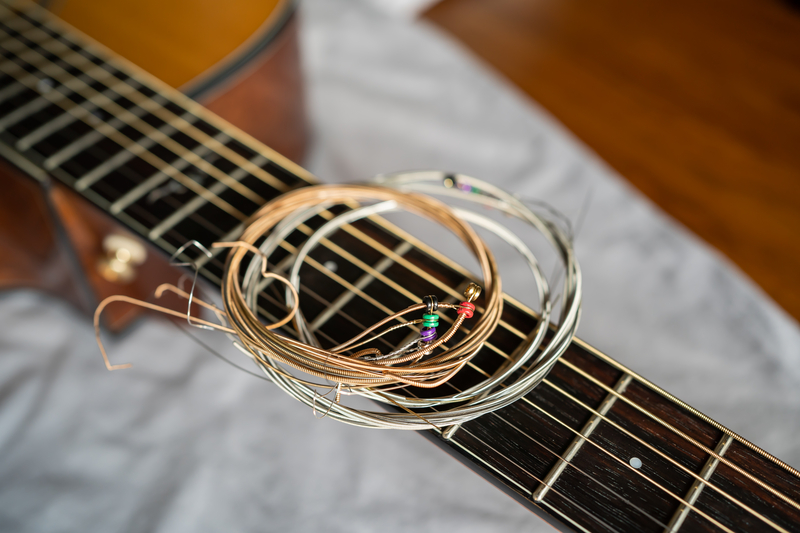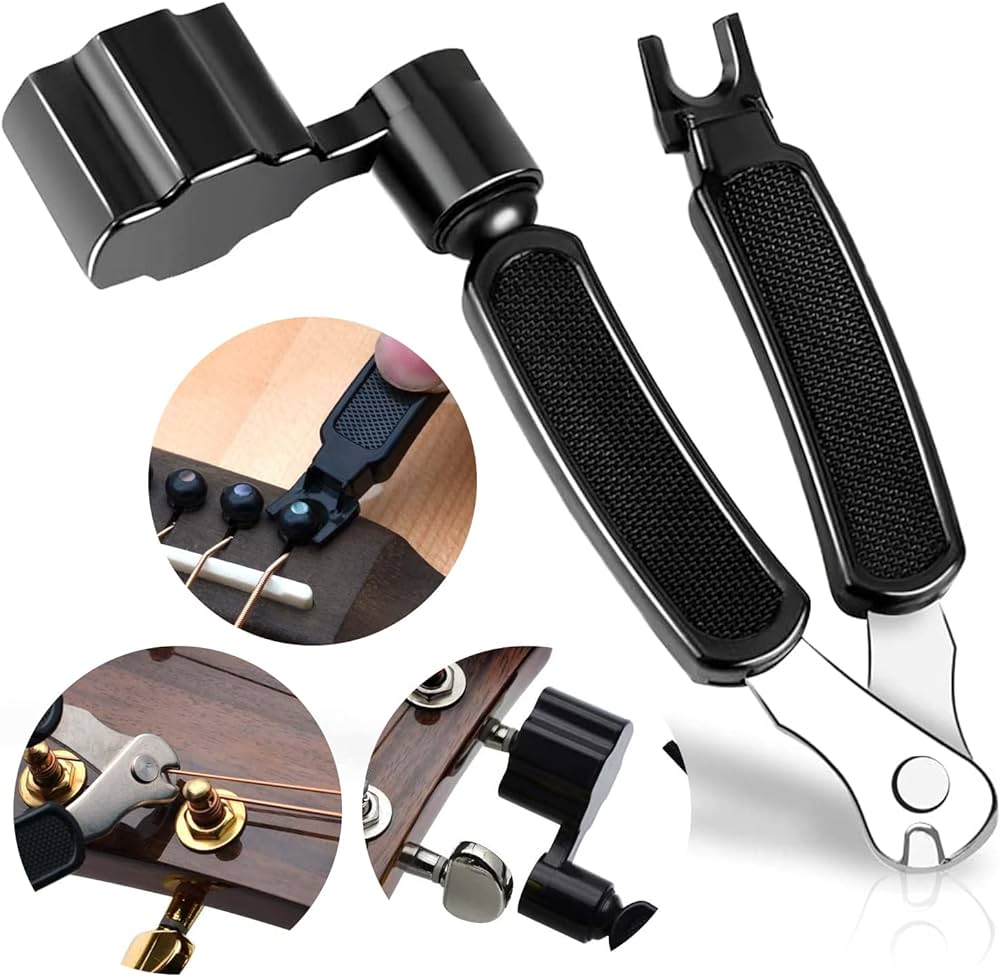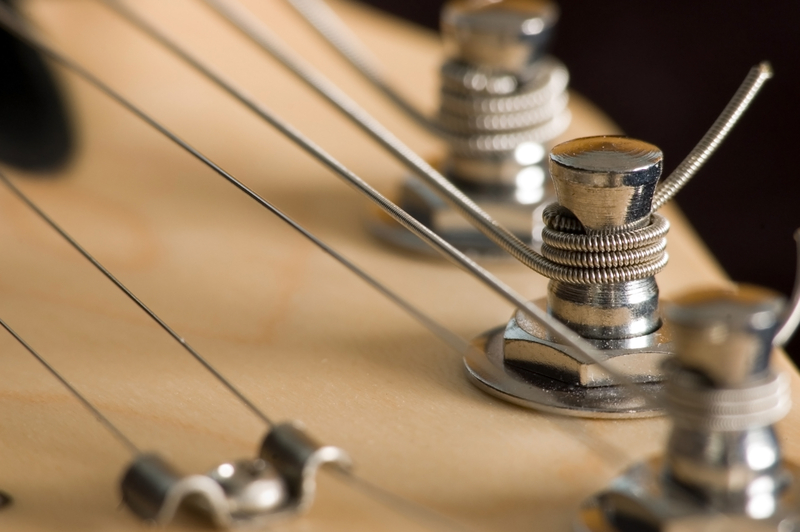How to Restring an Acoustic Guitar A Step by Step Guide

Restringing your instrument is a crucial step in maintaining its performance and longevity. In this article, we will walk you through the process of restringing an acoustic guitar, from removing the old strings to tuning the new ones.
We will also discuss how often you should restring your guitar, the benefits of restringing, and common mistakes to avoid. So, grab your tools and let’s get started!
Restring an Acoustic Guitar: Key Takeaways:
- Restringing an acoustic guitar is important for maintaining its sound quality, playability, and preventing damage.
- The necessary tools for restringing include wire cutters, a string winder, and new strings.
- Following a step-by-step guide, remove old strings, clean the guitar, insert new strings, secure them at the tuning pegs, tune the guitar, and stretch the strings for optimal results.
Why is Restringing an Acoustic Guitar Important?
Restringing an acoustic guitar is essential to maintain the instrument’s optimal sound quality and playability.
Ensuring the strings are fresh and properly tensioned is crucial to produce a crisp, vibrant tone. When strings are played frequently, they tend to lose their brightness and intonation, affecting the overall sound.
Restringing allows for proper maintenance of the bridge pins, which play a key role in anchoring the strings securely. It’s recommended to wind the strings neatly around the tuning posts to prevent slippage and ensure tuning stability during play. By following these steps, you can significantly enhance your acoustic guitar’s performance and longevity.
What Tools Do You Need to Restring an Acoustic Guitar?
When restringing an acoustic guitar, essential tools include wire cutters, bridge pins, and a string winder to facilitate the process.
Wire cutters are crucial for trimming excess string length after restringing to ensure a clean look and prevent any potential damage. Bridge pins are used to secure the strings in place at the bridge end, contributing to the guitar’s sound quality and playability.
String winders significantly speed up the restringing process by quickly winding the strings around the tuning pegs, allowing for precise tuning adjustments and maintaining proper tension.
Step-by-Step Guide to Restringing an Acoustic Guitar
To restring an acoustic guitar effectively, follow a step-by-step process that involves removing the old strings, cleaning the guitar, inserting the new strings, securing them at the tuning pegs, tuning the guitar, and stretching the strings.
Start by loosening the tension of the old strings at the tuning pegs and unwinding them carefully to prevent any damage. Once the strings are removed, take this opportunity to clean the fingerboard and frets using a soft cloth.
Next, unwrap the new strings, making sure to identify and match each string with the correct gauge. Begin by inserting the string tails into the bridge of the guitar, following the specific instructions for your guitar model.

Step 1: Remove the Old Strings
Begin the restringing process by loosening and removing the old strings from the bridge pins using wire cutters, ensuring a clean removal to prepare for installing new strings.
After carefully removing the strings, inspect the bridge and fretboard for any remnants of the old strings, ensuring that they are completely clear before proceeding. Residue left behind can affect the sound quality and playability of your guitar.
Next, gently lift the bridge pins using a bridge pin removal tool or a small object like a flathead screwdriver to avoid any potential damage to the bridge. Take your time and do this step cautiously to maintain the integrity of the bridge and prevent any unnecessary strain or tension.
Step 2: Clean the Guitar and Fretboard
After removing the old strings, clean the guitar and fretboard using lemon oil to remove any dirt, dust, or residue that may affect the performance of the new strings.
- Begin by applying a small amount of lemon oil onto a clean microfibre cloth.
- Gently rub the fretboard in the direction of the grain to lift off any grime or build-up.
- Focus on the areas around the frets where dirt tends to accumulate.
- Continue this process until the fretboard looks revitalised and conditioned.
- Remember to wipe off any excess oil to prevent residue buildup.
- Once the fretboard is clean and dry, you can restring the guitar with your desired string gauge and adjust the saddle for optimal playability.
Step 3: Insert the New Strings
Insert the new strings into the bridge holes, ensuring that the string ball ends are securely positioned under the bridge pins for proper installation.
Next, when positioning the strings, take care to distinguish between the outer wire and the core wire. The core wire usually has a different colour or texture and is crucial for the string’s strength and durability. Make sure that the winding on the string is facing towards the headstock as this affects the tuning stability. Gently pull the string through the tuning peg hole, leaving just enough slack to wind around the tuning post securely.
Step 4: Secure the Strings at the Tuning Pegs
Once the strings are inserted and stretched to the correct pitch, secure them at the tuning pegs by wrapping and tightening the string windings around the pegs.
Proper winding technique plays a crucial role in maintaining the tuning stability of the strings. Start by threading the excess string through the hole in the tuning peg and leave a few inches of slack. Next, wind the string neatly around the peg in the direction that the machine head turns, ensuring that each winding is tight and overlaps the previous one.
Avoid overlapping the string too much, as this can cause tuning issues. Once the string is securely wound, trim any excess with wire cutters for a clean finish. Properly wound strings not only enhance tuning precision but also reduce the risk of slippage during intense playing. Take care to repeat this process for each string on your instrument to achieve optimal sound quality and performance.

Step 5: Tune the Guitar
Use a guitar tuner to tune the strings to the correct pitch, ensuring that each string produces the desired sound and harmonises with the other strings.
Proper tuning of a guitar is crucial for achieving optimal sound quality and performance. By utilising a tuner, you can make precise adjustments to each string, enhancing tuning stability and overall playability. This not only ensures that your instrument sounds its best but also contributes to a more enjoyable playing experience.
Remember to check the tuning pegs regularly for any slippage and make adjustments as needed to maintain accurate tuning across all strings. Maintaining a comfortable playing position while tuning can help you accurately gauge the pitch and make necessary corrections effectively.
Step 6: Stretch the Strings
To stabilise the tuning and minimise the need for frequent adjustments, gently stretch each string along the fretboard to remove excess slack and ensure proper tension.
- Start by holding the headstock with one hand to pull the tail of the string gently with the other.
- Carefully tug on the string without applying too much force to prevent breakage.
- Next, press down on each string at various points along the fretboard to distribute the tension evenly.
For wound strings, it is essential to be extra cautious as they can be more prone to breakage during stretching. By repeating this process for each string and ensuring the string pins are securely in place, you can significantly improve the tuning stability and playability of your instrument.
How Often Should You Restring an Acoustic Guitar?
The frequency of restringing an acoustic guitar depends on factors like playing frequency, climate conditions, and personal preference, but a general recommendation is to restring every 3-6 months for optimal performance.
Environmental variables play a significant role in the lifespan of guitar strings. High humidity levels can accelerate corrosion and wear, while extreme temperatures can lead to tension loss. Similarly, frequent playing, especially for professional musicians, may require more frequent string changes due to the increased strain on the strings.
Switching to top-quality strings can also impact the restringing frequency. Premium strings are better able to withstand wear and maintain their tone over time, potentially extending the interval between changes. Using a string winder when restringing can make the process quicker and more efficient, encouraging musicians to change strings more regularly to ensure consistent sound quality and tuning stability.
What Are the Benefits of Restringing an Acoustic Guitar?
Restringing an acoustic guitar offers numerous benefits, including improved sound quality, enhanced tuning stability, and prolonged instrument lifespan.
String gauge is a crucial factor to consider when restringing. Different gauges can alter the tone and playability of your guitar. It is essential to choose the right gauge based on your playing style and preference.
Replacing old strings can improve the playability of the instrument, making it easier and more enjoyable to strum and fret. When restringing, inspecting and potentially replacing the bridge pins can also contribute to better tone production and overall sound quality. Correctly restringing your guitar ensures that each string is properly tensioned, maintaining the structural integrity of the instrument.
Improved Sound Quality
By restringing an acoustic guitar, players can experience a significant enhancement in sound quality, clarity, and tonal richness, transforming their playing experience.
When old strings accumulate dead skin cells and lose their original vibrancy, the overall sound produced can become dull and lackluster. By replacing these worn-out strings with fresh ones, the improvement in tonal quality is immediately noticeable. The new strings, free from accumulated debris, resonate more freely, resulting in enhanced clarity and better projection. The tight connection between the outer wire and the bridge hole ensures optimal vibration transfer, further enriching the guitar’s sound dynamics.
Better Playability
Restringing an acoustic guitar can improve playability by ensuring proper tension, reduced string slippage, and enhanced tuning stability, allowing for smoother and more precise performance.
When the strings on an acoustic guitar are replaced, the tension is carefully adjusted to achieve the proper pitch required for optimal sound quality. This adjustment not only impacts the tone of the instrument but also influences the player’s comfort and ease of playing. With the right tension, string slippage is minimised, reducing the chances of the strings going out of tune during a performance. The friction between the frets and strings is controlled, allowing for more precise finger placement and chord transitions. Machine heads play a vital role in maintaining this tension and stability, ensuring that the guitar stays in tune for longer periods.
Prevents Damage to the Guitar
Regular restringing can prevent damage to the guitar by maintaining proper string installation, reducing wear on the bridge pins, and preserving the structural integrity of the instrument.
When strings become dull or rusty, they lose their tone quality, affecting the overall sound produced by the guitar. By replacing them regularly, you ensure optimal sound performance during your play. Old strings can entrap bacteria and dirt, which may cause harm not only to the strings themselves but also to the guitar’s finish and fretboard. Core wire exposure from worn strings can lead to buzzing, intonation problems, and even potential damage to the guitar’s neck.
Maintains Tuning Stability
Regular restringing helps maintain tuning stability by ensuring consistent tension, minimising string slippage, and optimising the winding integrity of the strings, resulting in a more reliable and harmonious playing experience.
When you change the strings periodically, you prevent the gradual wear and tear that can compromise the string pegs or bridge pegs’ proper functioning. It’s not just about the aesthetics – it significantly impacts the overall playability of your instrument.
By maintaining proper tension balance through restringing, you are also paying attention to the winding quality of the strings, which is crucial for producing clear, resonant tones. Taking care of these details can make a remarkable difference in the longevity and performance of your guitar.
Common Mistakes to Avoid When Restringing an Acoustic Guitar
When restringing an acoustic guitar, it’s crucial to avoid common mistakes such as improper string winding, incorrect bridge pin placement, and inadequate stretching of the strings to ensure optimal performance.
One common error is not utilising the machine head properly while winding the strings, which can result in tuning instability. To remedy this, always ensure that each string is wound neatly and tightly around the machine head post, maintaining even tension throughout.
Another mistake often made is improper trimming of the string tails. Leaving excess string length can not only hinder tuning stability but also pose a safety risk. Using a pair of pliers, trim the excess string closely to the machine head, making sure there are no protruding ends.
Stretching the strings is a crucial step often overlooked. Inadequate stretching can lead to constant detuning. To prevent this, gently pull and stretch each string along its length after installation, repeating the process until the strings settle and hold their tuning.
Conclusion
Restringing an acoustic guitar is a fundamental maintenance task that enhances sound quality, playability, and overall performance, ensuring that the instrument remains in top condition for continued enjoyment.
In terms of top-quality musical instruments like an acoustic guitar, investing time in restringing can truly make a noticeable difference. The new strings contribute to a clearer, more vibrant sound that resonates with depth and richness.
A properly restrung guitar offers improved playability, making it easier to produce desired tones and execute complex fingerings on the fretboard. This enhanced ease of play can elevate your musical performance and encourage more frequent practice sessions.
Restringing on a regular basis can extend the longevity of your acoustic guitar by preventing damage and wear on the fretboard, ultimately preserving its value over time.
Looking to finesse your technique? Interested in a popular style – like the blues? Or eager to flex your electric guitar skills? You’ll learn it all on our expert-led Elevate courses for guitar.
From the blog

Rockstars in Training: The Best Kids’ Electric Guitars for 2024

Redefining Your Riffs: How Electric Guitar Strings Shape Your Sound


